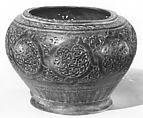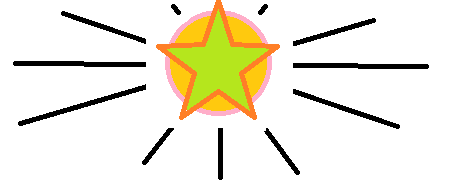Poe, Spengler, and Joyce
Oswald Spengler wrote in ‘The Decline of the West’ that world cultures occur in three major styles: Apollonian (Graeco-Roman); Faustian (Western-Northern European); and Magian (Asian and Islamic). 1
Oswald Spengler skribis en 'La Subiro de la Okcidento',
ke mondaj kulturoj okazas en tri ĉefaj stiloj:
Apolonia (greka-romia);
Faŭstiano (okcidente-nordeŭropa);
Magiano (azia kaj islama).

Arabic lamp 2
Guy DAVENPORT in ‘The Geography of the Imagination’ states that these same categories were used by Edgar Allan Poe 3 a century before Oswald SPENGLER wrote about them 4 or James JOYCE used them in Ulysses. 5
we can summarize Ulysses…it is
about a man, Leopold Bloom, in a
northern European, a Faustian-
technological context, who is by
heritage a Jew of Spengler’s
Magian culture, who is made to
act out the adventures of Ulysses,
exemplar of classical man.
Davenport, p. 10.
Guy DAVENPORT en 'La Geografio de la Imago' deklaras,
ke ĉi tiujn samajn kategoriojn uzis Edgar Allan Poe
jarcenton antaŭ ol Oswald SPENGLER aŭ James JOYCE
uzis ilin en Uliso.
ni povas resumi Uliso …
temas pri viro, Leopold Bloom,
en nordeŭropa, Faŭst-teknologia
kunteksto, kiu estas de heredaĵo
judo de la Magiana kulturo de
Spengler, kiu estas farita al
plenumu la aventurojn de Uliso,
ekzemplero de klasika homo.
DAVENPORT explains that POE, SPENGLER, JOYCE, and other authors used symbols from these three identifiable categories because they remain “undiminished and still full of human significance” after more than 5,000 years, and because we can trace the origins of them “backward along geographical lines.” They may appear in the present day in forms recognizable to contemporary readers, and “the appeal of popular literature must lie precisely in its faithfulness to ancient traditions.” 6
DAVENPORT klarigas, ke POE, SPENGLER, JOYCE
kaj aliaj aŭtoroj uzis simbolojn de ĉi tiuj
tri identigeblaj kategorioj, ĉar ili restas
"nediminuitaj kaj ankoraŭ plenaj de homa signifo"
post pli ol 5 000 jaroj, kaj ĉar ni povas spuri
ilian originojn "malantaŭen laŭ geografiaj linioj."
Ili povas aperi nuntempe en formoj rekoneblaj
al nuntempaj legantoj, kaj "la allogo de
populara literaturo devas kuŝi ĝuste en
sia fideleco al antikvaj tradicioj."
DAVENPORT discusses how POE included all three sources of symbols in his beautiful “To Helen”. While this “great octosyllabic sonnet…is classical”, the “window-niche…slipped in from Northern Europe; it is Gothic,” and “the closing words, ‘Holy Land,’ belong to the Levant, to the arabesque.” 7
Helen, thy beauty is to me
Like those Nicean barks of yore
That gently, o’er a perfumed sea,
The weary, way-worn wanderer bore
To his own native shore.
On desperate seas long wont to roam,
Thy hyacinth hair, thy classic face,
Thy Naiad airs have brought me home
To the glory that was Greece,
And the grandeur that was Rome.
Lo, in yon brilliant window-niche
How statue-like I see thee stand,
The agate lamp within thy hand,
Ah! Psyche, from the regions which
Are Holy Land!
Jen, Esperante:
Heleno, beleco via
kiel la prabarkoj Nicaj
sur milda mar’ purfumita,
portis la vaganton lacan
al lia denaska bordon.
Je mar’ vagi furioze,
hiacint-har’, klasik-vizaĝ’,
Najade irigis min hejmen
al glor’ Greka ke estis,
grandiozo kiel Romo.
En tie fenestroniĉo
staras vi kiel statuo,
agato-lampo en mano,
Psiĥo! el regionoj ke
estas Sankta Lando.
Dum ĉi tiu "bonega oktosilaba soneto...
estas klasika", la "fenestro-niĉo...
eniĝis el Norda Eŭropo; ĝi estas gotika",
kaj" la finaj vortoj, "Sankta Lando"
apartenas al Levantenio, al la arabesko."
Mi esperas, ke mia Esperanta traduko de
la fama poemo de Poe reflektas la manieron
kiel li inkluzivis simbolojn de ĉi tiuj
tri fontoj. Kion vi pensas?
I hope my Esperanto translation of Poe’s famous poem reflects the way he included symbols from these three sources. What do you think?
referencoj/references
-
SPENGLER, Oswald. ‘The Decline of the West’ 1918, 1922. Esperante ‘La Subiro de la Okcidento’ ↩
-
POE, Edgar Allan. ‘Tales of the Grotesque and Arabesque’ ↩
-
DAVENPORT, Guy. ‘The Geography of the Imagination’, North Point Press, 1981, p. 9-11. Poe’s “imagination appropriated” geographies “from other writers.”/La “imago de Poe alproprigis” geografiojn “de aliaj verkistoj.” ↩
-
DAVENPORT, p. 11. ↩
-
DAVENPORT, p. 7. ↩
